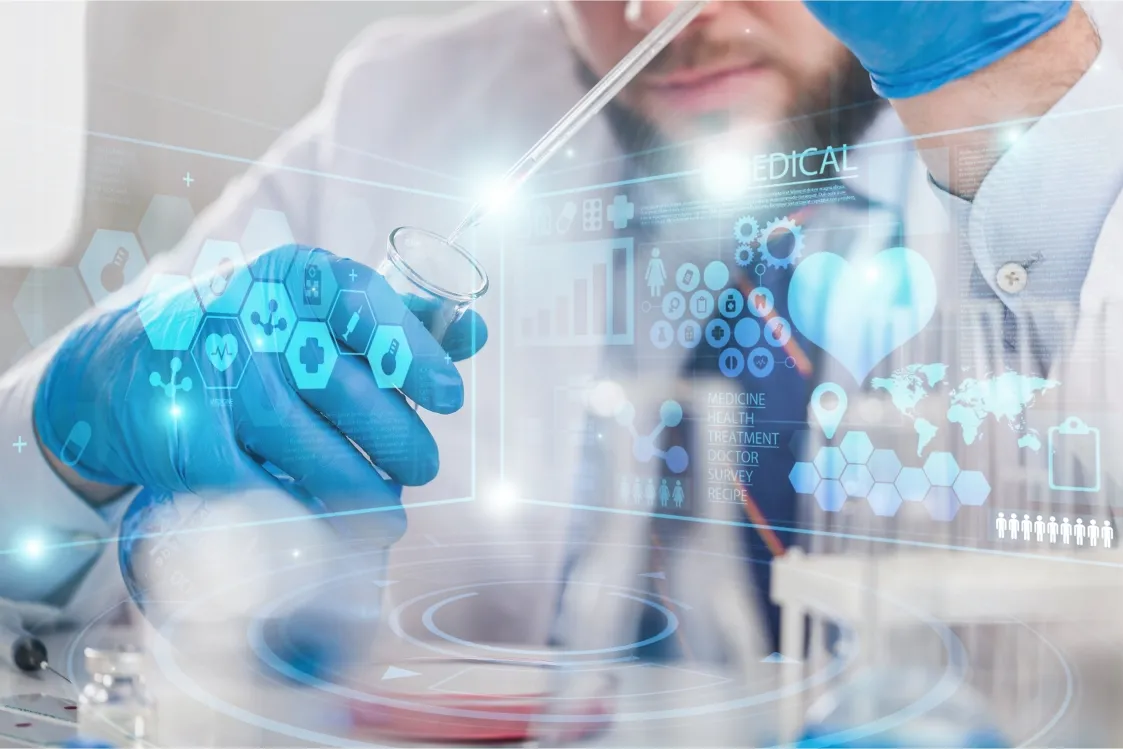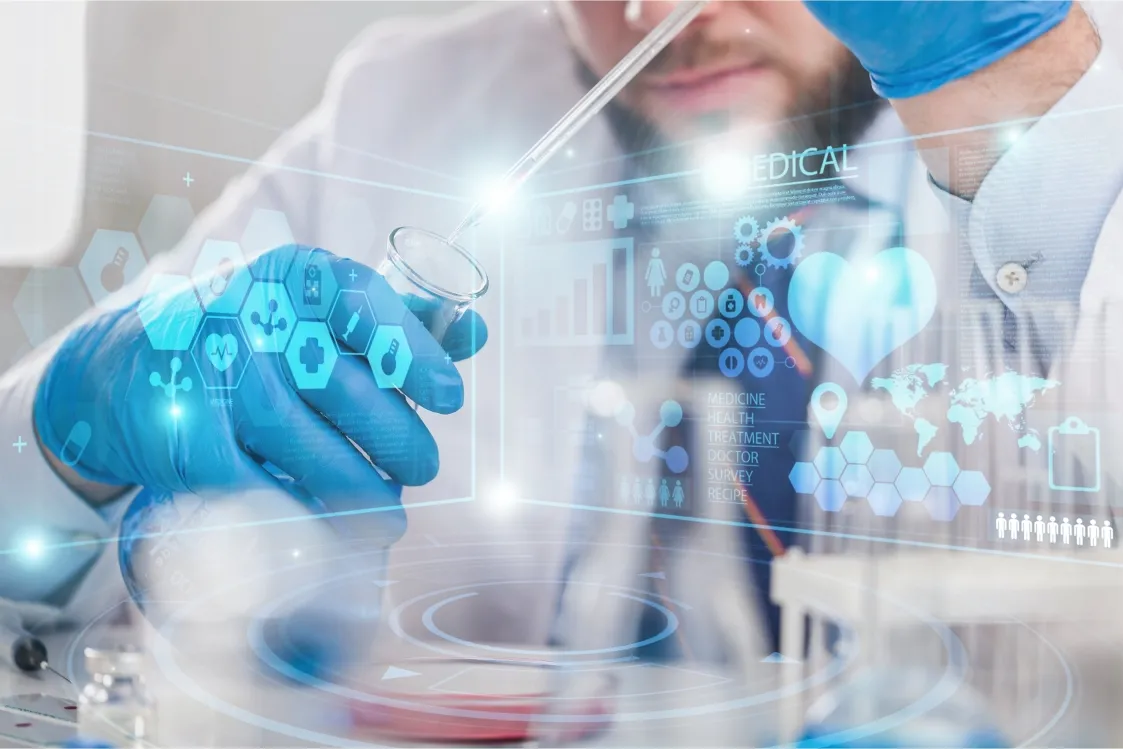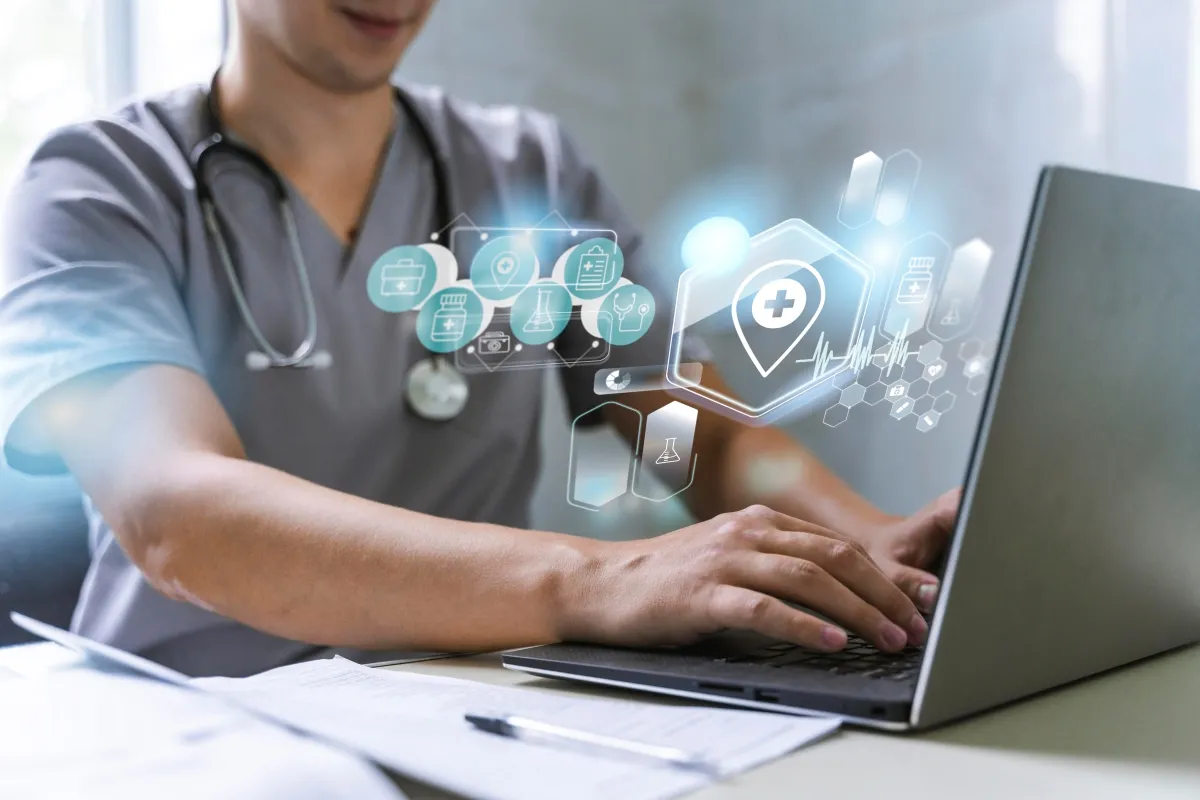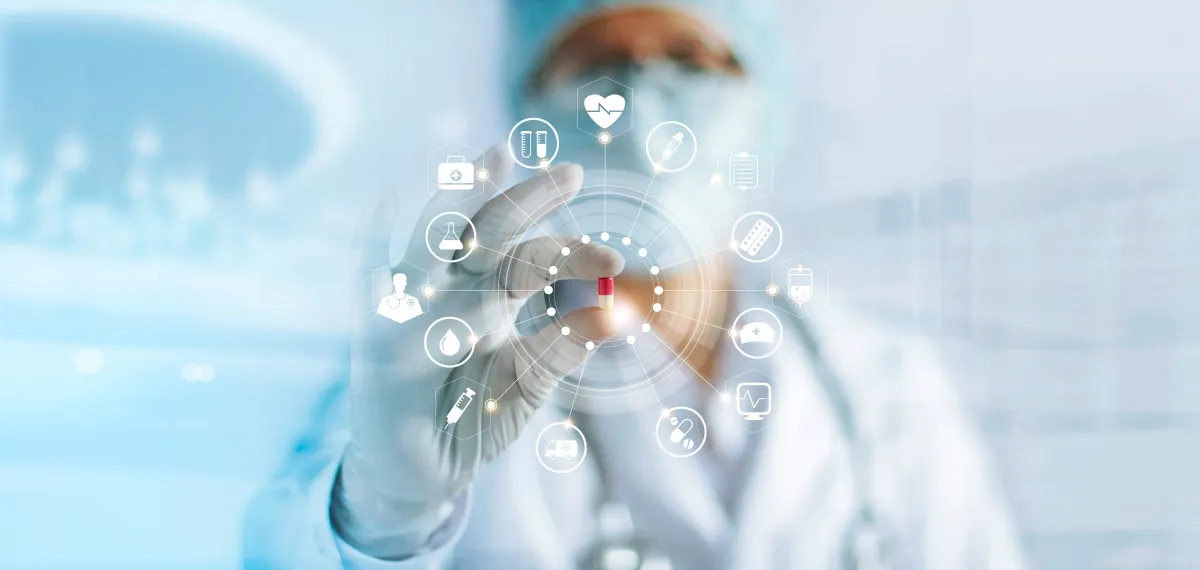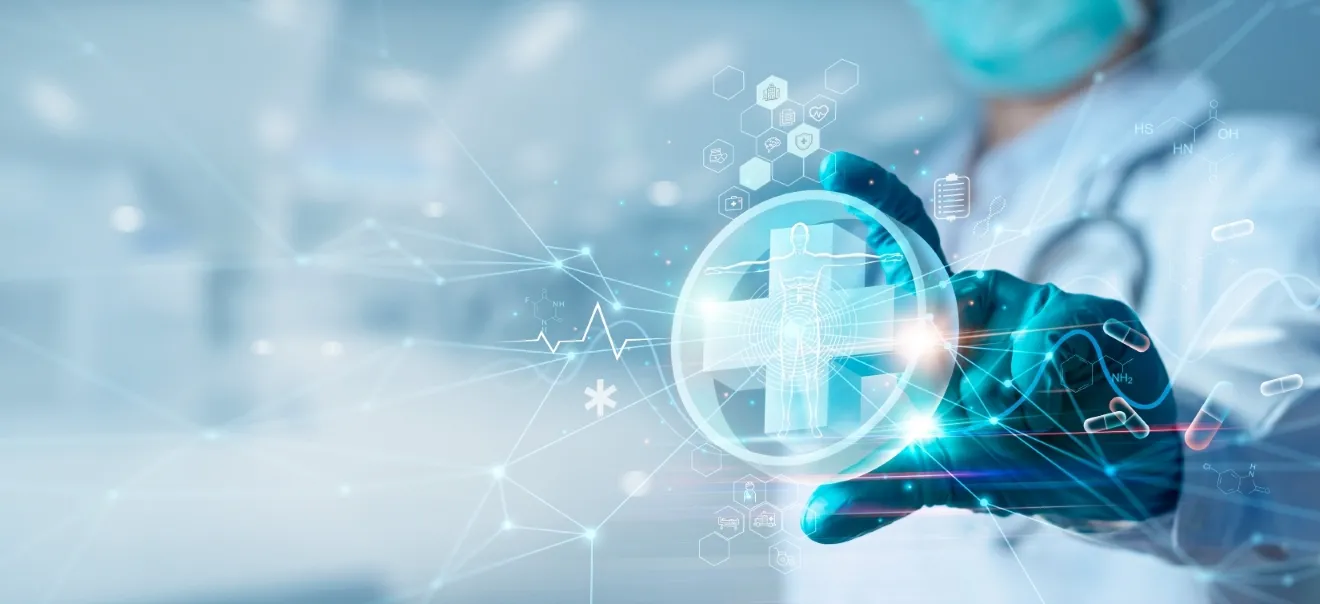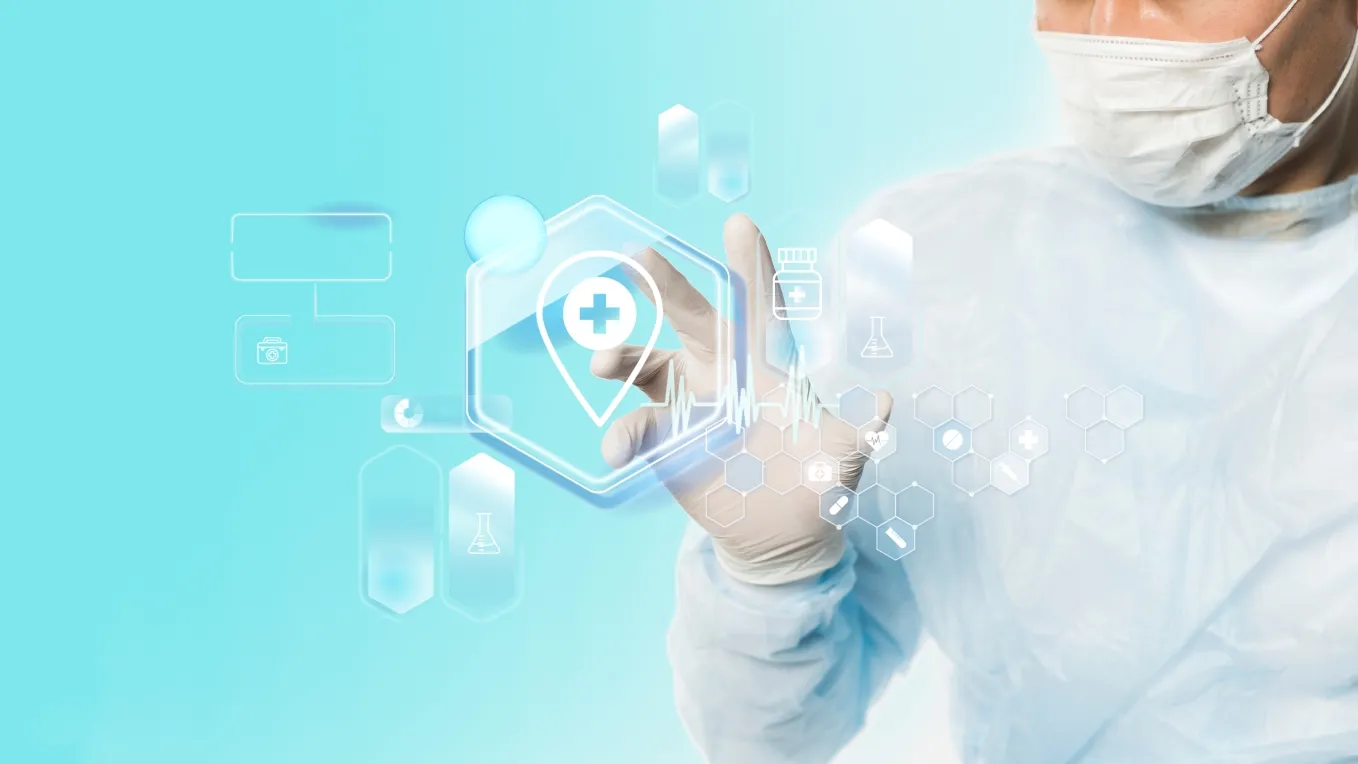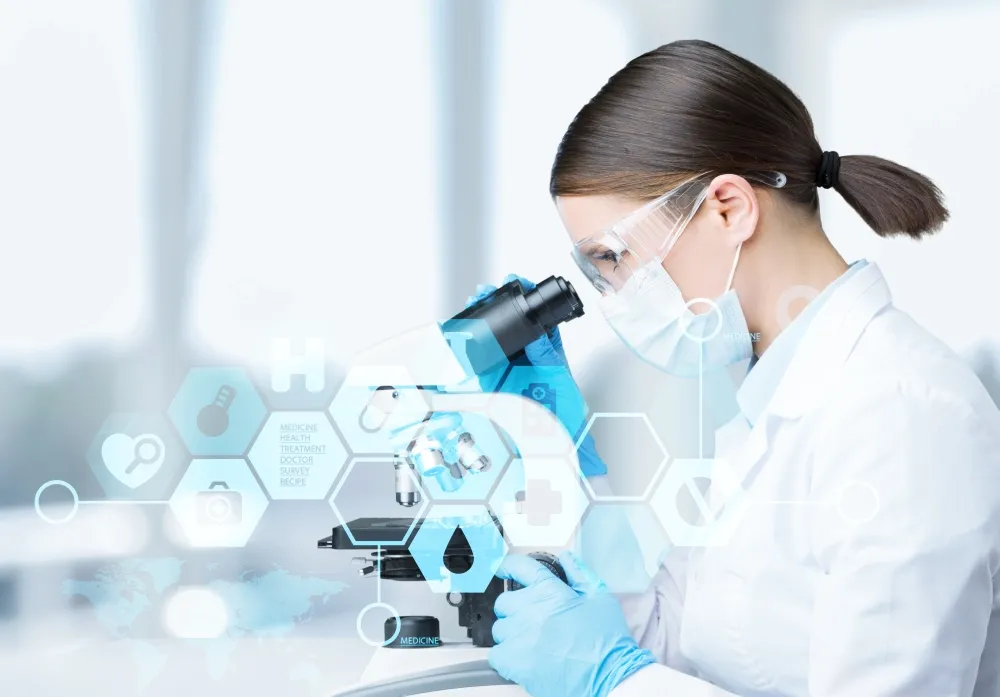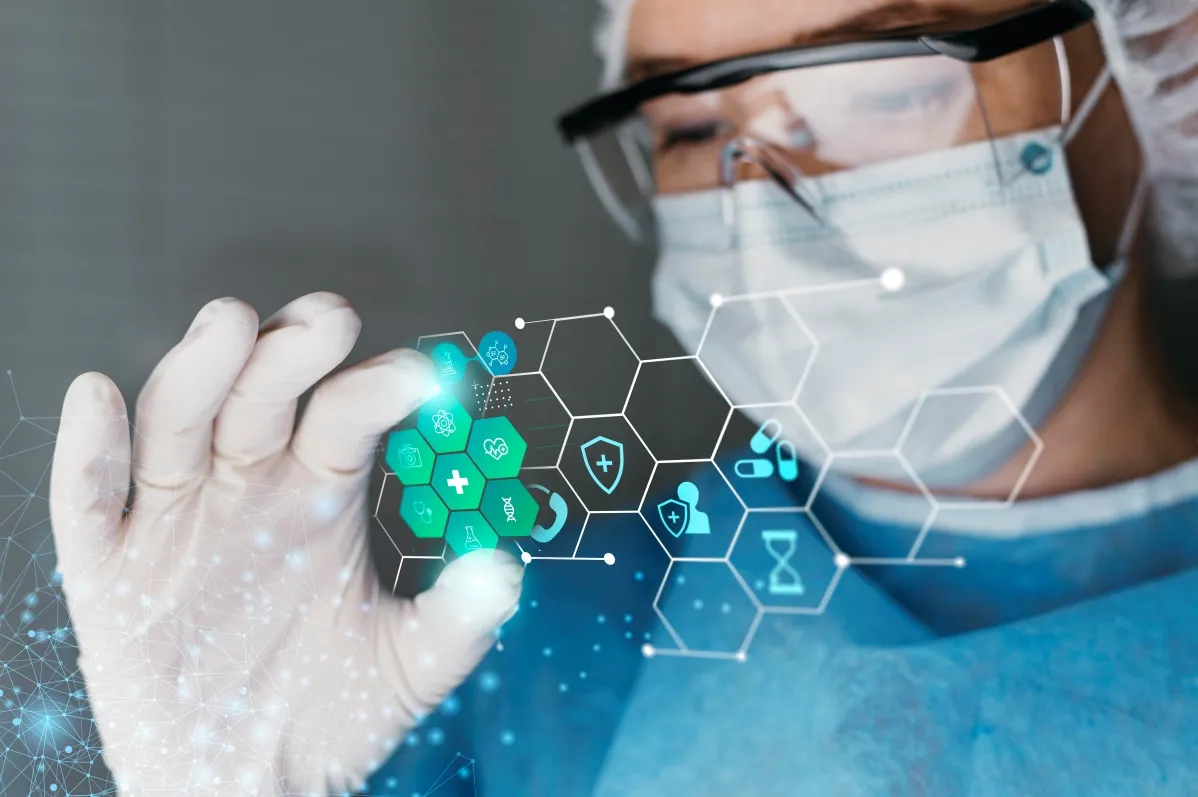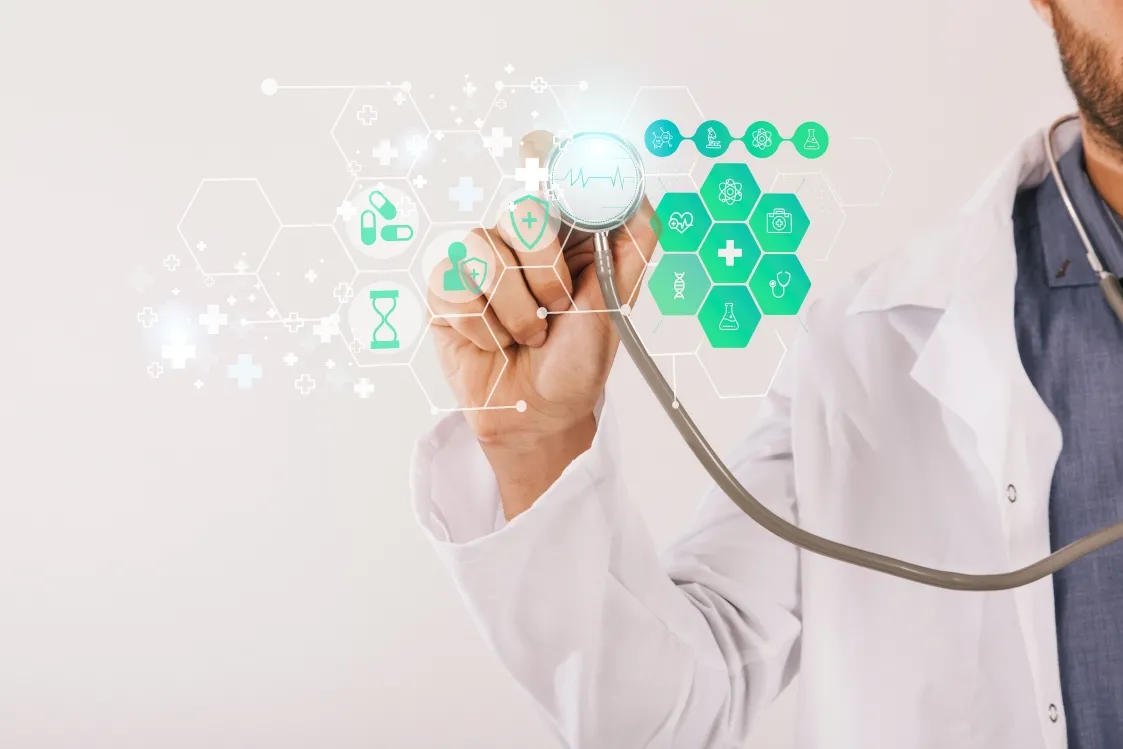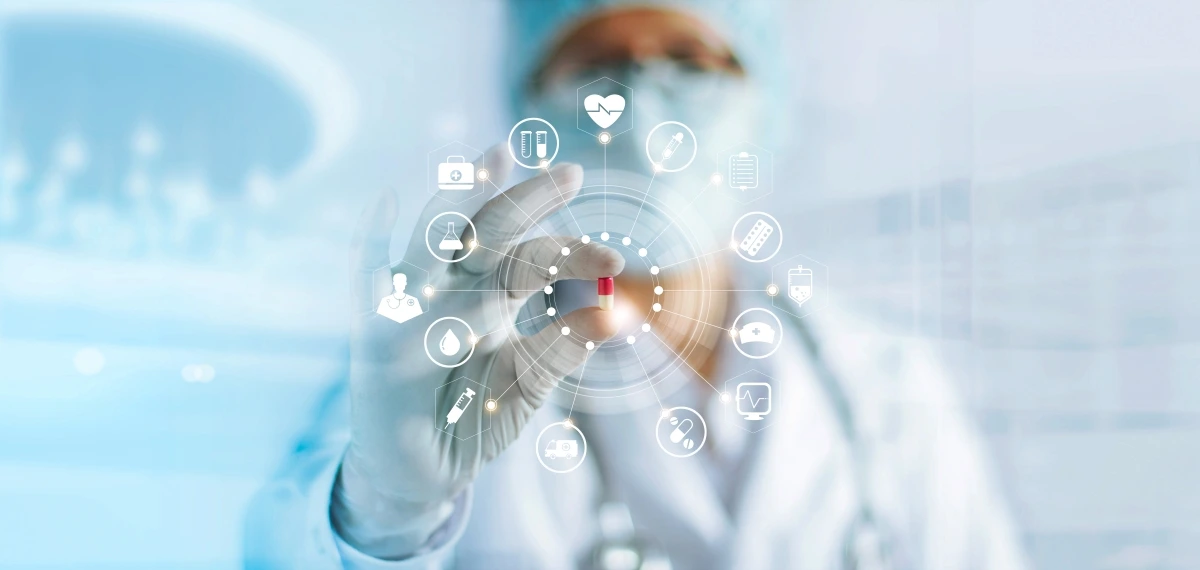Biosimilar insulin is a biological copy of an original insulin and there is increasing interest in developing and using them. Biosimilar insulins (hereafter called biosimilars or follow-on biologics) are designed to be highly similar to the original, or reference, insulin product described in a patent. They are analogous to generic versions of small-molecule drugs and are developed by companies other than the reference product's patent holder. Producers of biosimilars use manufacturing techniques that are similar, but likely not identical to, those used by the original patent holder. Thus, although a biosimilar and its reference insulin product will have the same amino acid sequence, they may differ slightly in their more subtle molecular characteristics and clinical profiles.
Global Biosimilar Insulin key players include Biocon, Gan&Lee, Wockhardt, Eli Lilly, Sanofi etc. Global top three players hold a share over 70%. India is the largest market, with a share about 30%, followed by Southeast Asia and China, both have a share about 40 percent.
This report is a detailed and comprehensive analysis for global Biosimilar Insulin market. Both quantitative and qualitative analyses are presented by manufacturers, by region & country, by Type and by Distribution Channel. As the market is constantly changing, this report explores the competition, supply and demand trends, as well as key factors that contribute to its changing demands across many markets. Company profiles and product examples of selected competitors, along with market share estimates of some of the selected leaders for the year 2023, are provided.
Key Features:
Global Biosimilar Insulin market size and forecasts, in consumption value ($ Million), sales quantity (K Unit), and average selling prices (US$/Unit), 2018-2029
Global Biosimilar Insulin market size and forecasts by region and country, in consumption value ($ Million), sales quantity (K Unit), and average selling prices (US$/Unit), 2018-2029
Global Biosimilar Insulin market size and forecasts, by Type and by Distribution Channel, in consumption value ($ Million), sales quantity (K Unit), and average selling prices (US$/Unit), 2018-2029
Global Biosimilar Insulin market shares of main players, shipments in revenue ($ Million), sales quantity (K Unit), and ASP (US$/Unit), 2018-2023
The Primary Objectives in This Report Are:
To determine the size of the total market opportunity of global and key countries
To assess the growth potential for Biosimilar Insulin
To forecast future growth in each product and end-use market
To assess competitive factors affecting the marketplace
This report profiles key players in the global Biosimilar Insulin market based on the following parameters - company overview, production, value, price, gross margin, product portfolio, geographical presence, and key developments.
This report also provides key insights about market drivers, restraints, opportunities, new product launches or approvals, COVID-19 and Russia-Ukraine War Influence.
Key Market Players
Eli Lilly
Sanofi
Gan&Lee
Tonghua Dongbao
United Laboratory
Geropharm
Biocon
Wockhardt
Segmentation By Type
Biosimilar Insulin Glargine
Biosimilar Insulin Lispro
Other
Hospital
Retail Pharmacy
Others
Segmentation By Region
North America (United States, Canada and Mexico)
Europe (Germany, France, United Kingdom, Russia, Italy, and Rest of Europe)
Asia-Pacific (China, Japan, Korea, India, Southeast Asia, and Australia)
South America (Brazil, Argentina, Colombia, and Rest of South America)
Middle East & Africa (Saudi Arabia, UAE, Egypt, South Africa, and Rest of Middle East & Africa)
Market SWOT Analysis
What are the strengths of the Biosimilar Insulin Market in 2025?
The Biosimilar Insulin Market in 2025 is poised for growth due to increasing affordability and accessibility of insulin for diabetic patients. These products offer a lower-cost alternative to originator insulin, which can increase market adoption, especially in emerging markets with high diabetes prevalence. Additionally, biosimilars offer potential for increased competition and innovation in the insulin market.
What weaknesses could affect the growth of the Biosimilar Insulin Market in 2025?
Despite the potential, biosimilar insulin faces regulatory hurdles and market resistance. Physicians and patients may be hesitant to adopt biosimilars due to concerns over efficacy and safety, leading to slower uptake. Additionally, there may be a lack of awareness and trust in biosimilars, particularly in regions with established brand loyalty to original insulin products.
What opportunities exist for the Biosimilar Insulin Market in 2025?
As the global diabetic population continues to rise, there is a significant opportunity for biosimilar insulin to fill the gap in insulin accessibility. Partnerships with healthcare providers and insurers to include biosimilars in treatment plans could increase their market share. Advancements in formulation technologies and expanded approvals for newer biosimilars also present opportunities for growth.
What threats could hinder the progress of the Biosimilar Insulin Market in 2025?
The biosimilar insulin market could face challenges from legal battles with originator insulin manufacturers, who may engage in patent disputes to delay competition. Additionally, the market could experience pricing pressures and market consolidation as larger pharmaceutical companies increase their focus on controlling the biosimilar landscape. These factors might create a competitive environment that could slow the adoption of biosimilar insulins.
Market PESTEL Analysis
What are the political factors affecting the Biosimilar Insulin Market in 2025?
Government regulations and policies regarding the approval and pricing of biosimilar insulins play a key role in shaping the market. Supportive policies, such as cost containment strategies and reimbursement frameworks, could encourage biosimilar adoption. However, political resistance from originator insulin manufacturers could lead to lobbying efforts that delay biosimilar market entry.
How do economic factors influence the Biosimilar Insulin Market in 2025?
The economic pressure to reduce healthcare spending makes biosimilars an attractive option, especially in developing markets with limited healthcare budgets. Lower-priced biosimilars could be more widely adopted in price-sensitive markets, while high costs of production or lack of reimbursement could inhibit their market penetration in wealthier nations.
What social factors impact the Biosimilar Insulin Market in 2025?
The growing prevalence of diabetes worldwide creates a significant demand for insulin, leading to a higher need for cost-effective alternatives. Public awareness and patient acceptance of biosimilars remain crucial for adoption. Educational campaigns and outreach to healthcare providers could improve trust in biosimilar insulins, fostering greater social acceptance.
What technological factors affect the Biosimilar Insulin Market in 2025?
Technological advancements in biosimilar manufacturing processes and formulation improvements are key to ensuring product quality and reducing production costs. Innovation in insulin delivery devices and digital health technologies could enhance the overall patient experience, driving further adoption of biosimilars as part of integrated treatment plans.
What environmental factors influence the Biosimilar Insulin Market in 2025?
Sustainability concerns are driving the pharmaceutical industry to adopt greener manufacturing practices. The environmental impact of producing biosimilar insulins, including waste reduction and energy consumption, will be increasingly scrutinized. Companies that integrate environmentally sustainable practices into their production processes may gain a competitive edge in the market.
What legal factors affect the Biosimilar Insulin Market in 2025?
Patent expirations and legal battles with originator insulin manufacturers can significantly impact the timing of biosimilar insulin market entry. Regulatory approvals and patent laws governing the production of biosimilars are critical, and legal challenges could delay or limit market access. Intellectual property rights and biosimilar exclusivity periods will continue to be pivotal in shaping the competitive landscape.
Market SIPOC Analysis
What are the suppliers in the Biosimilar Insulin Market in 2025?
Suppliers in the biosimilar insulin market include manufacturers of biosimilar insulins, raw material suppliers for insulin production (such as cell culture media, reagents, and enzymes), and technology providers for biomanufacturing. Regulatory agencies, such as the FDA and EMA, also serve as essential suppliers in the approval and standardization processes.
Who are the input providers in the Biosimilar Insulin Market in 2025?
Input providers include companies specializing in biosimilar insulin development, research institutions conducting clinical trials, and pharmaceutical suppliers providing specialized equipment and active ingredients. These inputs are essential to ensuring the production, development, and regulatory compliance of biosimilar insulin products.
What processes are involved in the Biosimilar Insulin Market in 2025?
Key processes include the research and development phase, clinical trials for biosimilar insulin approval, regulatory submissions, production, quality control, and packaging. Marketing and distribution channels are also vital processes for ensuring that biosimilars reach healthcare providers and patients in target markets.
What are the outputs of the Biosimilar Insulin Market in 2025?
The primary outputs are biosimilar insulin products, which are cost-effective alternatives to branded insulin, and the associated intellectual property, including regulatory approvals and clinical trial data. Other outputs include market reports, regulatory submissions, and the establishment of strategic partnerships.
Who are the customers in the Biosimilar Insulin Market in 2025?
Customers include healthcare providers such as hospitals, clinics, and doctors who prescribe insulin for diabetic patients. Additionally, patients, particularly those in price-sensitive markets, and insurance companies that reimburse for insulin treatments are key customers. Pharmaceutical distributors and wholesalers also play a crucial role in reaching these end-users.
Market Porter's Five Forces
What is the threat of new entrants in the Biosimilar Insulin Market in 2025?
The threat of new entrants is moderate. The high costs of research and development, regulatory approval, and the complex manufacturing process for biosimilar insulins create significant barriers to entry. However, as the market grows and demand for affordable insulin increases, there may be opportunities for well-funded companies to enter the market.
What is the bargaining power of suppliers in the Biosimilar Insulin Market in 2025?
The bargaining power of suppliers is moderate to high. Suppliers of raw materials, such as active pharmaceutical ingredients and biomanufacturing technologies, hold significant influence due to the specialized nature of insulin production. However, as more biosimilar manufacturers enter the market, the supply base may diversify, reducing supplier power over time.
What is the bargaining power of buyers in the Biosimilar Insulin Market in 2025?
The bargaining power of buyers is high, especially in markets where there is increasing price sensitivity, such as developing countries. With many biosimilar insulin options becoming available, buyers, including healthcare providers, insurance companies, and patients, have more choices, which enhances their negotiating power and demand for competitive pricing.
What is the threat of substitute products in the Biosimilar Insulin Market in 2025?
The threat of substitutes is low. While alternative diabetes treatments such as oral medications and newer insulin delivery systems exist, biosimilar insulins remain the primary substitute for original insulin products. Advances in alternative therapies may emerge, but for the foreseeable future, insulin remains the essential treatment for diabetes, limiting substitution threats.
What is the intensity of competitive rivalry in the Biosimilar Insulin Market in 2025?
The intensity of competitive rivalry is high. As multiple biosimilar insulin manufacturers emerge and existing players look to expand their portfolios, competition will intensify. Pricing pressures, innovation in formulations, and regulatory hurdles are factors that will drive competitive strategies, making the market highly dynamic and challenging for participants.
Market Upstream Analysis
What are the key upstream factors influencing the Biosimilar Insulin Market in 2025?
Key upstream factors include the availability and cost of raw materials required for biosimilar insulin production, such as biologic substances, cell culture media, and enzymes. Additionally, the development and manufacturing technologies used in the production of biosimilars play a significant role in determining production costs and scalability.
How do regulatory frameworks impact the upstream dynamics of the Biosimilar Insulin Market in 2025?
Regulatory frameworks significantly influence upstream activities, especially in terms of approval processes for biosimilar insulins. Regulatory agencies like the FDA and EMA impose stringent requirements for biosimilar development, including clinical trials, manufacturing standards, and safety protocols. These regulations can delay product launch and increase upfront costs for manufacturers.
What are the challenges faced by suppliers in the Biosimilar Insulin Market in 2025?
Suppliers face challenges related to the complexity of biosimilar insulin production. The manufacturing processes require high precision and advanced technology, which can lead to higher production costs. Additionally, fluctuations in the supply of key raw materials and the regulatory burden on suppliers can add to these challenges.
What role do partnerships and collaborations play in the upstream sector of the Biosimilar Insulin Market in 2025?
Partnerships and collaborations between biosimilar manufacturers, research institutions, and technology providers are essential to overcoming technical and regulatory challenges. Such alliances can provide access to cutting-edge biomanufacturing technologies, enable shared expertise in clinical trials, and help navigate the regulatory landscape more efficiently.
How does the competitive landscape impact upstream activities in the Biosimilar Insulin Market in 2025?
In a competitive environment, biosimilar manufacturers are under constant pressure to reduce production costs and improve efficiency. This encourages upstream players to innovate in manufacturing technologies and improve supply chain management. The presence of multiple market participants can drive the need for strategic sourcing and better pricing negotiations with suppliers.
Market Midstream Analysis
What are the key midstream factors affecting the Biosimilar Insulin Market in 2025?
Key midstream factors include the manufacturing and production processes, which involve large-scale biomanufacturing facilities, production technologies, and quality control systems. The efficiency and scalability of these processes directly impact the cost and availability of biosimilar insulin products. Additionally, effective supply chain management and distribution networks are essential to ensure product availability in global markets.
How do partnerships and collaborations affect the midstream sector of the Biosimilar Insulin Market in 2025?
Partnerships between biosimilar manufacturers and contract manufacturing organizations (CMOs) play a crucial role in the midstream sector. These collaborations help streamline production processes, reduce costs, and ensure compliance with regulatory standards. Partnerships with distributors also enhance market reach and product availability, particularly in regions with limited access to original insulin brands.
What role do regulatory approvals and compliance play in the midstream market?
Regulatory approvals are a major factor in the midstream activities of the biosimilar insulin market. Manufacturers must ensure that their production facilities and processes meet stringent regulatory standards to obtain approval from authorities like the FDA and EMA. Non-compliance or delays in regulatory approvals can result in production setbacks, increased costs, or delayed market entry.
How do production costs and efficiency impact the midstream dynamics in the Biosimilar Insulin Market in 2025?
Production costs are a critical factor in the midstream sector of the biosimilar insulin market. Efficient production methods, such as the use of advanced biomanufacturing technologies and automation, help reduce costs and improve scalability. However, high initial capital investment and ongoing operational expenses for large-scale manufacturing can impact profitability and pricing strategies.
What challenges do manufacturers face in the midstream Biosimilar Insulin Market in 2025?
Manufacturers in the midstream segment face challenges related to the complexity of biosimilar production, such as maintaining product consistency and quality across batches. Additionally, there may be supply chain disruptions, fluctuations in raw material prices, and the need to keep up with evolving regulatory requirements. These challenges can affect production timelines, costs, and overall market competitiveness.
Market Downstream Analysis
What are the key downstream factors affecting the Biosimilar Insulin Market in 2025?
Key downstream factors include the distribution and availability of biosimilar insulin in various healthcare settings, such as hospitals, clinics, and pharmacies. Additionally, effective marketing strategies and the role of insurance companies in reimbursing these products are crucial for increasing patient access. The demand from patients, driven by affordability and accessibility, also plays a significant role in shaping the downstream market.
How does the adoption of biosimilar insulin by healthcare providers impact the downstream market?
Healthcare providers’ willingness to adopt biosimilar insulin significantly impacts downstream dynamics. While cost-effectiveness can drive adoption, factors such as perceived efficacy, safety, and patient acceptance are also important. Educating healthcare providers about the benefits and reliability of biosimilars is essential for increasing their usage in clinical practice.
What role do distribution channels play in the downstream segment of the Biosimilar Insulin Market?
Distribution channels, including pharmaceutical wholesalers, retail pharmacies, and online platforms, play a pivotal role in making biosimilar insulin available to patients. A well-established distribution network ensures timely delivery and availability in regions where demand is high. Effective partnerships with distributors are essential to reaching a broad patient base, especially in underserved markets.
How does pricing strategy affect the downstream dynamics of the Biosimilar Insulin Market in 2025?
Pricing strategy is a key factor in the downstream segment. Competitive pricing for biosimilar insulins can drive adoption, especially in markets with price-sensitive patients. Insurance coverage and reimbursement policies also influence how accessible these products are to patients. A well-positioned pricing strategy helps biosimilars compete effectively with branded insulins, making them a more attractive option for both healthcare providers and patients.
What are the challenges faced in the downstream sector of the Biosimilar Insulin Market in 2025?
Challenges in the downstream sector include patient hesitancy to switch from branded insulin to biosimilars, which can be influenced by factors like perceived safety and efficacy. Additionally, complex reimbursement processes and varying insurance policies can limit access to biosimilars in certain regions. Ensuring widespread education and support for patients and healthcare providers is essential to overcoming these barriers.
Chapter 1, to describe Biosimilar Insulin product scope, market overview, market estimation caveats and base year.
Chapter 2, to profile the top manufacturers of Biosimilar Insulin, with price, sales, revenue and global market share of Biosimilar Insulin from 2018 to 2023.
Chapter 3, the Biosimilar Insulin competitive situation, sales quantity, revenue and global market share of top manufacturers are analyzed emphatically by landscape contrast.
Chapter 4, the Biosimilar Insulin breakdown data are shown at the regional level, to show the sales quantity, consumption value and growth by regions, from 2018 to 2029.
Chapter 5 and 6, to segment the sales by Type and distribution channel, with sales market share and growth rate by type, distribution channel, from 2018 to 2029.
Chapter 7, 8, 9, 10 and 11, to break the sales data at the country level, with sales quantity, consumption value and market share for key countries in the world, from 2017 to 2022.and Biosimilar Insulin market forecast, by regions, type and distribution channel, with sales and revenue, from 2024 to 2029.
Chapter 12, market dynamics, drivers, restraints, trends, Porters Five Forces analysis, and Influence of COVID-19 and Russia-Ukraine War.
Chapter 13, the key raw materials and key suppliers, and industry chain of Biosimilar Insulin.
Chapter 14 and 15, to describe Biosimilar Insulin sales channel, distributors, customers, research findings and conclusion.
1 Market Overview
1.1 Product Overview and Scope of Biosimilar Insulin
1.2 Market Estimation Caveats and Base Year
1.3 Market Analysis by Type
1.3.1 Overview: Global Biosimilar Insulin Consumption Value by Type: 2018 Versus 2022 Versus 2029
1.3.2 Biosimilar Insulin Glargine
1.3.3 Biosimilar Insulin Lispro
1.3.4 Other
1.4 Market Analysis by Distribution Channel
1.4.1 Overview: Global Biosimilar Insulin Consumption Value by Distribution Channel: 2018 Versus 2022 Versus 2029
1.4.2 Hospital
1.4.3 Retail Pharmacy
1.4.4 Others
1.5 Global Biosimilar Insulin Market Size & Forecast
1.5.1 Global Biosimilar Insulin Consumption Value (2018 & 2022 & 2029)
1.5.2 Global Biosimilar Insulin Sales Quantity (2018-2029)
1.5.3 Global Biosimilar Insulin Average Price (2018-2029)
2 Manufacturers Profiles
2.1 Eli Lilly
2.1.1 Eli Lilly Details
2.1.2 Eli Lilly Major Business
2.1.3 Eli Lilly Biosimilar Insulin Product and Services
2.1.4 Eli Lilly Biosimilar Insulin Sales Quantity, Average Price, Revenue, Gross Margin and Market Share (2018-2023)
2.1.5 Eli Lilly Recent Developments/Updates
2.2 Sanofi
2.2.1 Sanofi Details
2.2.2 Sanofi Major Business
2.2.3 Sanofi Biosimilar Insulin Product and Services
2.2.4 Sanofi Biosimilar Insulin Sales Quantity, Average Price, Revenue, Gross Margin and Market Share (2018-2023)
2.2.5 Sanofi Recent Developments/Updates
2.3 Gan&Lee
2.3.1 Gan&Lee Details
2.3.2 Gan&Lee Major Business
2.3.3 Gan&Lee Biosimilar Insulin Product and Services
2.3.4 Gan&Lee Biosimilar Insulin Sales Quantity, Average Price, Revenue, Gross Margin and Market Share (2018-2023)
2.3.5 Gan&Lee Recent Developments/Updates
2.4 Tonghua Dongbao
2.4.1 Tonghua Dongbao Details
2.4.2 Tonghua Dongbao Major Business
2.4.3 Tonghua Dongbao Biosimilar Insulin Product and Services
2.4.4 Tonghua Dongbao Biosimilar Insulin Sales Quantity, Average Price, Revenue, Gross Margin and Market Share (2018-2023)
2.4.5 Tonghua Dongbao Recent Developments/Updates
2.5 United Laboratory
2.5.1 United Laboratory Details
2.5.2 United Laboratory Major Business
2.5.3 United Laboratory Biosimilar Insulin Product and Services
2.5.4 United Laboratory Biosimilar Insulin Sales Quantity, Average Price, Revenue, Gross Margin and Market Share (2018-2023)
2.5.5 United Laboratory Recent Developments/Updates
2.6 Geropharm
2.6.1 Geropharm Details
2.6.2 Geropharm Major Business
2.6.3 Geropharm Biosimilar Insulin Product and Services
2.6.4 Geropharm Biosimilar Insulin Sales Quantity, Average Price, Revenue, Gross Margin and Market Share (2018-2023)
2.6.5 Geropharm Recent Developments/Updates
2.7 Biocon
2.7.1 Biocon Details
2.7.2 Biocon Major Business
2.7.3 Biocon Biosimilar Insulin Product and Services
2.7.4 Biocon Biosimilar Insulin Sales Quantity, Average Price, Revenue, Gross Margin and Market Share (2018-2023)
2.7.5 Biocon Recent Developments/Updates
2.8 Wockhardt
2.8.1 Wockhardt Details
2.8.2 Wockhardt Major Business
2.8.3 Wockhardt Biosimilar Insulin Product and Services
2.8.4 Wockhardt Biosimilar Insulin Sales Quantity, Average Price, Revenue, Gross Margin and Market Share (2018-2023)
2.8.5 Wockhardt Recent Developments/Updates
3 Competitive Environment: Biosimilar Insulin by Manufacturer
3.1 Global Biosimilar Insulin Sales Quantity by Manufacturer (2018-2023)
3.2 Global Biosimilar Insulin Revenue by Manufacturer (2018-2023)
3.3 Global Biosimilar Insulin Average Price by Manufacturer (2018-2023)
3.4 Market Share Analysis (2022)
3.4.1 Producer Shipments of Biosimilar Insulin by Manufacturer Revenue ($MM) and Market Share (%): 2022
3.4.2 Top 3 Biosimilar Insulin Manufacturer Market Share in 2022
3.4.2 Top 6 Biosimilar Insulin Manufacturer Market Share in 2022
3.5 Biosimilar Insulin Market: Overall Company Footprint Analysis
3.5.1 Biosimilar Insulin Market: Region Footprint
3.5.2 Biosimilar Insulin Market: Company Product Type Footprint
3.5.3 Biosimilar Insulin Market: Company Product Application Footprint
3.6 New Market Entrants and Barriers to Market Entry
3.7 Mergers, Acquisition, Agreements, and Collaborations
4 Consumption Analysis by Region
4.1 Global Biosimilar Insulin Market Size by Region
4.1.1 Global Biosimilar Insulin Sales Quantity by Region (2018-2029)
4.1.2 Global Biosimilar Insulin Consumption Value by Region (2018-2029)
4.1.3 Global Biosimilar Insulin Average Price by Region (2018-2029)
4.2 North America Biosimilar Insulin Consumption Value (2018-2029)
4.3 Europe Biosimilar Insulin Consumption Value (2018-2029)
4.4 Asia-Pacific Biosimilar Insulin Consumption Value (2018-2029)
4.5 South America Biosimilar Insulin Consumption Value (2018-2029)
4.6 Middle East and Africa Biosimilar Insulin Consumption Value (2018-2029)
5 Market Segment by Type
5.1 Global Biosimilar Insulin Sales Quantity by Type (2018-2029)
5.2 Global Biosimilar Insulin Consumption Value by Type (2018-2029)
5.3 Global Biosimilar Insulin Average Price by Type (2018-2029)
6 Market Segment by Distribution Channel
6.1 Global Biosimilar Insulin Sales Quantity by Distribution Channel (2018-2029)
6.2 Global Biosimilar Insulin Consumption Value by Distribution Channel (2018-2029)
6.3 Global Biosimilar Insulin Average Price by Distribution Channel (2018-2029)
7 North America
7.1 North America Biosimilar Insulin Sales Quantity by Type (2018-2029)
7.2 North America Biosimilar Insulin Sales Quantity by Distribution Channel (2018-2029)
7.3 North America Biosimilar Insulin Market Size by Country
7.3.1 North America Biosimilar Insulin Sales Quantity by Country (2018-2029)
7.3.2 North America Biosimilar Insulin Consumption Value by Country (2018-2029)
7.3.3 United States Market Size and Forecast (2018-2029)
7.3.4 Canada Market Size and Forecast (2018-2029)
7.3.5 Mexico Market Size and Forecast (2018-2029)
8 Europe
8.1 Europe Biosimilar Insulin Sales Quantity by Type (2018-2029)
8.2 Europe Biosimilar Insulin Sales Quantity by Distribution Channel (2018-2029)
8.3 Europe Biosimilar Insulin Market Size by Country
8.3.1 Europe Biosimilar Insulin Sales Quantity by Country (2018-2029)
8.3.2 Europe Biosimilar Insulin Consumption Value by Country (2018-2029)
8.3.3 Germany Market Size and Forecast (2018-2029)
8.3.4 France Market Size and Forecast (2018-2029)
8.3.5 United Kingdom Market Size and Forecast (2018-2029)
8.3.6 Russia Market Size and Forecast (2018-2029)
8.3.7 Italy Market Size and Forecast (2018-2029)
9 Asia-Pacific
9.1 Asia-Pacific Biosimilar Insulin Sales Quantity by Type (2018-2029)
9.2 Asia-Pacific Biosimilar Insulin Sales Quantity by Distribution Channel (2018-2029)
9.3 Asia-Pacific Biosimilar Insulin Market Size by Region
9.3.1 Asia-Pacific Biosimilar Insulin Sales Quantity by Region (2018-2029)
9.3.2 Asia-Pacific Biosimilar Insulin Consumption Value by Region (2018-2029)
9.3.3 China Market Size and Forecast (2018-2029)
9.3.4 Japan Market Size and Forecast (2018-2029)
9.3.5 Korea Market Size and Forecast (2018-2029)
9.3.6 India Market Size and Forecast (2018-2029)
9.3.7 Southeast Asia Market Size and Forecast (2018-2029)
9.3.8 Australia Market Size and Forecast (2018-2029)
10 South America
10.1 South America Biosimilar Insulin Sales Quantity by Type (2018-2029)
10.2 South America Biosimilar Insulin Sales Quantity by Distribution Channel (2018-2029)
10.3 South America Biosimilar Insulin Market Size by Country
10.3.1 South America Biosimilar Insulin Sales Quantity by Country (2018-2029)
10.3.2 South America Biosimilar Insulin Consumption Value by Country (2018-2029)
10.3.3 Brazil Market Size and Forecast (2018-2029)
10.3.4 Argentina Market Size and Forecast (2018-2029)
11 Middle East & Africa
11.1 Middle East & Africa Biosimilar Insulin Sales Quantity by Type (2018-2029)
11.2 Middle East & Africa Biosimilar Insulin Sales Quantity by Distribution Channel (2018-2029)
11.3 Middle East & Africa Biosimilar Insulin Market Size by Country
11.3.1 Middle East & Africa Biosimilar Insulin Sales Quantity by Country (2018-2029)
11.3.2 Middle East & Africa Biosimilar Insulin Consumption Value by Country (2018-2029)
11.3.3 Turkey Market Size and Forecast (2018-2029)
11.3.4 Egypt Market Size and Forecast (2018-2029)
11.3.5 Saudi Arabia Market Size and Forecast (2018-2029)
11.3.6 South Africa Market Size and Forecast (2018-2029)
12 Market Dynamics
12.1 Biosimilar Insulin Market Drivers
12.2 Biosimilar Insulin Market Restraints
12.3 Biosimilar Insulin Trends Analysis
12.4 Porters Five Forces Analysis
12.4.1 Threat of New Entrants
12.4.2 Bargaining Power of Suppliers
12.4.3 Bargaining Power of Buyers
12.4.4 Threat of Substitutes
12.4.5 Competitive Rivalry
12.5 Influence of COVID-19 and Russia-Ukraine War
12.5.1 Influence of COVID-19
12.5.2 Influence of Russia-Ukraine War
13 Raw Material and Industry Chain
13.1 Raw Material of Biosimilar Insulin and Key Manufacturers
13.2 Manufacturing Costs Percentage of Biosimilar Insulin
13.3 Biosimilar Insulin Production Process
13.4 Biosimilar Insulin Industrial Chain
14 Shipments by Distribution Channel
14.1 Sales Channel
14.1.1 Direct to End-User
14.1.2 Distributors
14.2 Biosimilar Insulin Typical Distributors
14.3 Biosimilar Insulin Typical Customers
15 Research Findings and Conclusion
16 Appendix
16.1 Methodology
16.2 Research Process and Data Source
16.3 Disclaimer
List of Tables
Table 1. Global Biosimilar Insulin Consumption Value by Type, (USD Million), 2018 & 2022 & 2029
Table 2. Global Biosimilar Insulin Consumption Value by Distribution Channel, (USD Million), 2018 & 2022 & 2029
Table 3. Eli Lilly Basic Information, Manufacturing Base and Competitors
Table 4. Eli Lilly Major Business
Table 5. Eli Lilly Biosimilar Insulin Product and Services
Table 6. Eli Lilly Biosimilar Insulin Sales Quantity (K Unit), Average Price (US$/Unit), Revenue (USD Million), Gross Margin and Market Share (2018-2023)
Table 7. Eli Lilly Recent Developments/Updates
Table 8. Sanofi Basic Information, Manufacturing Base and Competitors
Table 9. Sanofi Major Business
Table 10. Sanofi Biosimilar Insulin Product and Services
Table 11. Sanofi Biosimilar Insulin Sales Quantity (K Unit), Average Price (US$/Unit), Revenue (USD Million), Gross Margin and Market Share (2018-2023)
Table 12. Sanofi Recent Developments/Updates
Table 13. Gan&Lee Basic Information, Manufacturing Base and Competitors
Table 14. Gan&Lee Major Business
Table 15. Gan&Lee Biosimilar Insulin Product and Services
Table 16. Gan&Lee Biosimilar Insulin Sales Quantity (K Unit), Average Price (US$/Unit), Revenue (USD Million), Gross Margin and Market Share (2018-2023)
Table 17. Gan&Lee Recent Developments/Updates
Table 18. Tonghua Dongbao Basic Information, Manufacturing Base and Competitors
Table 19. Tonghua Dongbao Major Business
Table 20. Tonghua Dongbao Biosimilar Insulin Product and Services
Table 21. Tonghua Dongbao Biosimilar Insulin Sales Quantity (K Unit), Average Price (US$/Unit), Revenue (USD Million), Gross Margin and Market Share (2018-2023)
Table 22. Tonghua Dongbao Recent Developments/Updates
Table 23. United Laboratory Basic Information, Manufacturing Base and Competitors
Table 24. United Laboratory Major Business
Table 25. United Laboratory Biosimilar Insulin Product and Services
Table 26. United Laboratory Biosimilar Insulin Sales Quantity (K Unit), Average Price (US$/Unit), Revenue (USD Million), Gross Margin and Market Share (2018-2023)
Table 27. United Laboratory Recent Developments/Updates
Table 28. Geropharm Basic Information, Manufacturing Base and Competitors
Table 29. Geropharm Major Business
Table 30. Geropharm Biosimilar Insulin Product and Services
Table 31. Geropharm Biosimilar Insulin Sales Quantity (K Unit), Average Price (US$/Unit), Revenue (USD Million), Gross Margin and Market Share (2018-2023)
Table 32. Geropharm Recent Developments/Updates
Table 33. Biocon Basic Information, Manufacturing Base and Competitors
Table 34. Biocon Major Business
Table 35. Biocon Biosimilar Insulin Product and Services
Table 36. Biocon Biosimilar Insulin Sales Quantity (K Unit), Average Price (US$/Unit), Revenue (USD Million), Gross Margin and Market Share (2018-2023)
Table 37. Biocon Recent Developments/Updates
Table 38. Wockhardt Basic Information, Manufacturing Base and Competitors
Table 39. Wockhardt Major Business
Table 40. Wockhardt Biosimilar Insulin Product and Services
Table 41. Wockhardt Biosimilar Insulin Sales Quantity (K Unit), Average Price (US$/Unit), Revenue (USD Million), Gross Margin and Market Share (2018-2023)
Table 42. Wockhardt Recent Developments/Updates
Table 43. Global Biosimilar Insulin Sales Quantity by Manufacturer (2018-2023) & (K Unit)
Table 44. Global Biosimilar Insulin Revenue by Manufacturer (2018-2023) & (USD Million)
Table 45. Global Biosimilar Insulin Average Price by Manufacturer (2018-2023) & (US$/Unit)
Table 46. Market Position of Manufacturers in Biosimilar Insulin, (Tier 1, Tier 2, and Tier 3), Based on Consumption Value in 2022
Table 47. Head Office and Biosimilar Insulin Production Site of Key Manufacturer
Table 48. Biosimilar Insulin Market: Company Product Type Footprint
Table 49. Biosimilar Insulin Market: Company Product Application Footprint
Table 50. Biosimilar Insulin New Market Entrants and Barriers to Market Entry
Table 51. Biosimilar Insulin Mergers, Acquisition, Agreements, and Collaborations
Table 52. Global Biosimilar Insulin Sales Quantity by Region (2018-2023) & (K Unit)
Table 53. Global Biosimilar Insulin Sales Quantity by Region (2024-2029) & (K Unit)
Table 54. Global Biosimilar Insulin Consumption Value by Region (2018-2023) & (USD Million)
Table 55. Global Biosimilar Insulin Consumption Value by Region (2024-2029) & (USD Million)
Table 56. Global Biosimilar Insulin Average Price by Region (2018-2023) & (US$/Unit)
Table 57. Global Biosimilar Insulin Average Price by Region (2024-2029) & (US$/Unit)
Table 58. Global Biosimilar Insulin Sales Quantity by Type (2018-2023) & (K Unit)
Table 59. Global Biosimilar Insulin Sales Quantity by Type (2024-2029) & (K Unit)
Table 60. Global Biosimilar Insulin Consumption Value by Type (2018-2023) & (USD Million)
Table 61. Global Biosimilar Insulin Consumption Value by Type (2024-2029) & (USD Million)
Table 62. Global Biosimilar Insulin Average Price by Type (2018-2023) & (US$/Unit)
Table 63. Global Biosimilar Insulin Average Price by Type (2024-2029) & (US$/Unit)
Table 64. Global Biosimilar Insulin Sales Quantity by Distribution Channel (2018-2023) & (K Unit)
Table 65. Global Biosimilar Insulin Sales Quantity by Distribution Channel (2024-2029) & (K Unit)
Table 66. Global Biosimilar Insulin Consumption Value by Distribution Channel (2018-2023) & (USD Million)
Table 67. Global Biosimilar Insulin Consumption Value by Distribution Channel (2024-2029) & (USD Million)
Table 68. Global Biosimilar Insulin Average Price by Distribution Channel (2018-2023) & (US$/Unit)
Table 69. Global Biosimilar Insulin Average Price by Distribution Channel (2024-2029) & (US$/Unit)
Table 70. North America Biosimilar Insulin Sales Quantity by Type (2018-2023) & (K Unit)
Table 71. North America Biosimilar Insulin Sales Quantity by Type (2024-2029) & (K Unit)
Table 72. North America Biosimilar Insulin Sales Quantity by Distribution Channel (2018-2023) & (K Unit)
Table 73. North America Biosimilar Insulin Sales Quantity by Distribution Channel (2024-2029) & (K Unit)
Table 74. North America Biosimilar Insulin Sales Quantity by Country (2018-2023) & (K Unit)
Table 75. North America Biosimilar Insulin Sales Quantity by Country (2024-2029) & (K Unit)
Table 76. North America Biosimilar Insulin Consumption Value by Country (2018-2023) & (USD Million)
Table 77. North America Biosimilar Insulin Consumption Value by Country (2024-2029) & (USD Million)
Table 78. Europe Biosimilar Insulin Sales Quantity by Type (2018-2023) & (K Unit)
Table 79. Europe Biosimilar Insulin Sales Quantity by Type (2024-2029) & (K Unit)
Table 80. Europe Biosimilar Insulin Sales Quantity by Distribution Channel (2018-2023) & (K Unit)
Table 81. Europe Biosimilar Insulin Sales Quantity by Distribution Channel (2024-2029) & (K Unit)
Table 82. Europe Biosimilar Insulin Sales Quantity by Country (2018-2023) & (K Unit)
Table 83. Europe Biosimilar Insulin Sales Quantity by Country (2024-2029) & (K Unit)
Table 84. Europe Biosimilar Insulin Consumption Value by Country (2018-2023) & (USD Million)
Table 85. Europe Biosimilar Insulin Consumption Value by Country (2024-2029) & (USD Million)
Table 86. Asia-Pacific Biosimilar Insulin Sales Quantity by Type (2018-2023) & (K Unit)
Table 87. Asia-Pacific Biosimilar Insulin Sales Quantity by Type (2024-2029) & (K Unit)
Table 88. Asia-Pacific Biosimilar Insulin Sales Quantity by Distribution Channel (2018-2023) & (K Unit)
Table 89. Asia-Pacific Biosimilar Insulin Sales Quantity by Distribution Channel (2024-2029) & (K Unit)
Table 90. Asia-Pacific Biosimilar Insulin Sales Quantity by Region (2018-2023) & (K Unit)
Table 91. Asia-Pacific Biosimilar Insulin Sales Quantity by Region (2024-2029) & (K Unit)
Table 92. Asia-Pacific Biosimilar Insulin Consumption Value by Region (2018-2023) & (USD Million)
Table 93. Asia-Pacific Biosimilar Insulin Consumption Value by Region (2024-2029) & (USD Million)
Table 94. South America Biosimilar Insulin Sales Quantity by Type (2018-2023) & (K Unit)
Table 95. South America Biosimilar Insulin Sales Quantity by Type (2024-2029) & (K Unit)
Table 96. South America Biosimilar Insulin Sales Quantity by Distribution Channel (2018-2023) & (K Unit)
Table 97. South America Biosimilar Insulin Sales Quantity by Distribution Channel (2024-2029) & (K Unit)
Table 98. South America Biosimilar Insulin Sales Quantity by Country (2018-2023) & (K Unit)
Table 99. South America Biosimilar Insulin Sales Quantity by Country (2024-2029) & (K Unit)
Table 100. South America Biosimilar Insulin Consumption Value by Country (2018-2023) & (USD Million)
Table 101. South America Biosimilar Insulin Consumption Value by Country (2024-2029) & (USD Million)
Table 102. Middle East & Africa Biosimilar Insulin Sales Quantity by Type (2018-2023) & (K Unit)
Table 103. Middle East & Africa Biosimilar Insulin Sales Quantity by Type (2024-2029) & (K Unit)
Table 104. Middle East & Africa Biosimilar Insulin Sales Quantity by Distribution Channel (2018-2023) & (K Unit)
Table 105. Middle East & Africa Biosimilar Insulin Sales Quantity by Distribution Channel (2024-2029) & (K Unit)
Table 106. Middle East & Africa Biosimilar Insulin Sales Quantity by Region (2018-2023) & (K Unit)
Table 107. Middle East & Africa Biosimilar Insulin Sales Quantity by Region (2024-2029) & (K Unit)
Table 108. Middle East & Africa Biosimilar Insulin Consumption Value by Region (2018-2023) & (USD Million)
Table 109. Middle East & Africa Biosimilar Insulin Consumption Value by Region (2024-2029) & (USD Million)
Table 110. Biosimilar Insulin Raw Material
Table 111. Key Manufacturers of Biosimilar Insulin Raw Materials
Table 112. Biosimilar Insulin Typical Distributors
Table 113. Biosimilar Insulin Typical Customers
List of Figures
Figure 1. Biosimilar Insulin Picture
Figure 2. Global Biosimilar Insulin Consumption Value by Type, (USD Million), 2018 & 2022 & 2029
Figure 3. Global Biosimilar Insulin Consumption Value Market Share by Type in 2022
Figure 4. Biosimilar Insulin Glargine Examples
Figure 5. Biosimilar Insulin Lispro Examples
Figure 6. Other Examples
Figure 7. Global Biosimilar Insulin Consumption Value by Distribution Channel, (USD Million), 2018 & 2022 & 2029
Figure 8. Global Biosimilar Insulin Consumption Value Market Share by Distribution Channel in 2022
Figure 9. Hospital Examples
Figure 10. Retail Pharmacy Examples
Figure 11. Others Examples
Figure 12. Global Biosimilar Insulin Consumption Value, (USD Million): 2018 & 2022 & 2029
Figure 13. Global Biosimilar Insulin Consumption Value and Forecast (2018-2029) & (USD Million)
Figure 14. Global Biosimilar Insulin Sales Quantity (2018-2029) & (K Unit)
Figure 15. Global Biosimilar Insulin Average Price (2018-2029) & (US$/Unit)
Figure 16. Global Biosimilar Insulin Sales Quantity Market Share by Manufacturer in 2022
Figure 17. Global Biosimilar Insulin Consumption Value Market Share by Manufacturer in 2022
Figure 18. Producer Shipments of Biosimilar Insulin by Manufacturer Sales Quantity ($MM) and Market Share (%): 2021
Figure 19. Top 3 Biosimilar Insulin Manufacturer (Consumption Value) Market Share in 2022
Figure 20. Top 6 Biosimilar Insulin Manufacturer (Consumption Value) Market Share in 2022
Figure 21. Global Biosimilar Insulin Sales Quantity Market Share by Region (2018-2029)
Figure 22. Global Biosimilar Insulin Consumption Value Market Share by Region (2018-2029)
Figure 23. North America Biosimilar Insulin Consumption Value (2018-2029) & (USD Million)
Figure 24. Europe Biosimilar Insulin Consumption Value (2018-2029) & (USD Million)
Figure 25. Asia-Pacific Biosimilar Insulin Consumption Value (2018-2029) & (USD Million)
Figure 26. South America Biosimilar Insulin Consumption Value (2018-2029) & (USD Million)
Figure 27. Middle East & Africa Biosimilar Insulin Consumption Value (2018-2029) & (USD Million)
Figure 28. Global Biosimilar Insulin Sales Quantity Market Share by Type (2018-2029)
Figure 29. Global Biosimilar Insulin Consumption Value Market Share by Type (2018-2029)
Figure 30. Global Biosimilar Insulin Average Price by Type (2018-2029) & (US$/Unit)
Figure 31. Global Biosimilar Insulin Sales Quantity Market Share by Distribution Channel (2018-2029)
Figure 32. Global Biosimilar Insulin Consumption Value Market Share by Distribution Channel (2018-2029)
Figure 33. Global Biosimilar Insulin Average Price by Distribution Channel (2018-2029) & (US$/Unit)
Figure 34. North America Biosimilar Insulin Sales Quantity Market Share by Type (2018-2029)
Figure 35. North America Biosimilar Insulin Sales Quantity Market Share by Distribution Channel (2018-2029)
Figure 36. North America Biosimilar Insulin Sales Quantity Market Share by Country (2018-2029)
Figure 37. North America Biosimilar Insulin Consumption Value Market Share by Country (2018-2029)
Figure 38. United States Biosimilar Insulin Consumption Value and Growth Rate (2018-2029) & (USD Million)
Figure 39. Canada Biosimilar Insulin Consumption Value and Growth Rate (2018-2029) & (USD Million)
Figure 40. Mexico Biosimilar Insulin Consumption Value and Growth Rate (2018-2029) & (USD Million)
Figure 41. Europe Biosimilar Insulin Sales Quantity Market Share by Type (2018-2029)
Figure 42. Europe Biosimilar Insulin Sales Quantity Market Share by Distribution Channel (2018-2029)
Figure 43. Europe Biosimilar Insulin Sales Quantity Market Share by Country (2018-2029)
Figure 44. Europe Biosimilar Insulin Consumption Value Market Share by Country (2018-2029)
Figure 45. Germany Biosimilar Insulin Consumption Value and Growth Rate (2018-2029) & (USD Million)
Figure 46. France Biosimilar Insulin Consumption Value and Growth Rate (2018-2029) & (USD Million)
Figure 47. United Kingdom Biosimilar Insulin Consumption Value and Growth Rate (2018-2029) & (USD Million)
Figure 48. Russia Biosimilar Insulin Consumption Value and Growth Rate (2018-2029) & (USD Million)
Figure 49. Italy Biosimilar Insulin Consumption Value and Growth Rate (2018-2029) & (USD Million)
Figure 50. Asia-Pacific Biosimilar Insulin Sales Quantity Market Share by Type (2018-2029)
Figure 51. Asia-Pacific Biosimilar Insulin Sales Quantity Market Share by Distribution Channel (2018-2029)
Figure 52. Asia-Pacific Biosimilar Insulin Sales Quantity Market Share by Region (2018-2029)
Figure 53. Asia-Pacific Biosimilar Insulin Consumption Value Market Share by Region (2018-2029)
Figure 54. China Biosimilar Insulin Consumption Value and Growth Rate (2018-2029) & (USD Million)
Figure 55. Japan Biosimilar Insulin Consumption Value and Growth Rate (2018-2029) & (USD Million)
Figure 56. Korea Biosimilar Insulin Consumption Value and Growth Rate (2018-2029) & (USD Million)
Figure 57. India Biosimilar Insulin Consumption Value and Growth Rate (2018-2029) & (USD Million)
Figure 58. Southeast Asia Biosimilar Insulin Consumption Value and Growth Rate (2018-2029) & (USD Million)
Figure 59. Australia Biosimilar Insulin Consumption Value and Growth Rate (2018-2029) & (USD Million)
Figure 60. South America Biosimilar Insulin Sales Quantity Market Share by Type (2018-2029)
Figure 61. South America Biosimilar Insulin Sales Quantity Market Share by Distribution Channel (2018-2029)
Figure 62. South America Biosimilar Insulin Sales Quantity Market Share by Country (2018-2029)
Figure 63. South America Biosimilar Insulin Consumption Value Market Share by Country (2018-2029)
Figure 64. Brazil Biosimilar Insulin Consumption Value and Growth Rate (2018-2029) & (USD Million)
Figure 65. Argentina Biosimilar Insulin Consumption Value and Growth Rate (2018-2029) & (USD Million)
Figure 66. Middle East & Africa Biosimilar Insulin Sales Quantity Market Share by Type (2018-2029)
Figure 67. Middle East & Africa Biosimilar Insulin Sales Quantity Market Share by Distribution Channel (2018-2029)
Figure 68. Middle East & Africa Biosimilar Insulin Sales Quantity Market Share by Region (2018-2029)
Figure 69. Middle East & Africa Biosimilar Insulin Consumption Value Market Share by Region (2018-2029)
Figure 70. Turkey Biosimilar Insulin Consumption Value and Growth Rate (2018-2029) & (USD Million)
Figure 71. Egypt Biosimilar Insulin Consumption Value and Growth Rate (2018-2029) & (USD Million)
Figure 72. Saudi Arabia Biosimilar Insulin Consumption Value and Growth Rate (2018-2029) & (USD Million)
Figure 73. South Africa Biosimilar Insulin Consumption Value and Growth Rate (2018-2029) & (USD Million)
Figure 74. Biosimilar Insulin Market Drivers
Figure 75. Biosimilar Insulin Market Restraints
Figure 76. Biosimilar Insulin Market Trends
Figure 77. Porters Five Forces Analysis
Figure 78. Manufacturing Cost Structure Analysis of Biosimilar Insulin in 2022
Figure 79. Manufacturing Process Analysis of Biosimilar Insulin
Figure 80. Biosimilar Insulin Industrial Chain
Figure 81. Sales Quantity Channel: Direct to End-User vs Distributors
Figure 82. Direct Channel Pros & Cons
Figure 83. Indirect Channel Pros & Cons
Figure 84. Methodology
Figure 85. Research Process and Data Source


